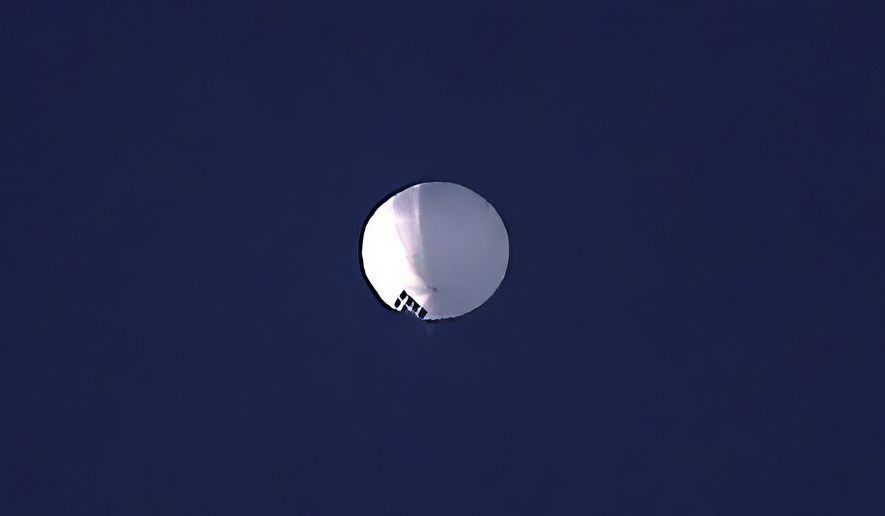NORAD, the Pentagon’s command defending North America, was tracking the Chinese surveillance balloon well before it entered U.S. or Canadian airspace, its commander said Monday, noting that at about 200 feet tall and carrying a payload the size of a jet airliner, it would have been hard for trackers to miss.
But Air Force Gen. Glen VanHerck, commander of NORAD, said that as the suspected spy surveillance craft made its way across Alaska and Canada before crossing back into U.S. territory last week, there wasn’t much the military could do without a presidential order to act, given there was no imminent threat seen to the homeland.
“The domain awareness was there as it approached Alaska. It was my assessment that this balloon did not present a physical or military threat to North America,” Gen. VanHerck told Pentagon reporters on Monday. “I could not take immediate action because it was not demonstrating a hostile act or hostile intent.”
After the large, white balloon drifted across the U.S. for several days, including over a number of sensitive military sites, a US F-22 jet fighter shot the balloon down over the Atlantic Ocean off the South Carolina coast. The Navy sent the USS Carter Hall, a dock landing ship, and the USNS Pathfinder, an oceanographic survey ship, to search an area of a little under a square mile for any debris.
Conditions were too rough on Sunday but the search effort was well underway on Monday, Gen. VanHerck said.
“It’s possible that there may be some debris that does float ashore,” he said
SEE ALSO: China: U.S. violated ‘international practice’ in shooting down spy balloon
When the news of the Chinese spy balloon broke, Biden administration figures were quick to note that similar incidents had occurred while Donald Trump was in the White House. Gen. VanHerck said the intelligence community used “additional means of collection” to assess the earlier surveillance balloon flights.
“Every day as NORAD commander, it’s my responsibility to detect threats to North America. We did not detect those threats,” he told reporters. “That’s a domain awareness gap that we have to figure out.”
Gen. VanHerck stood by the decision not to shoot down the balloon until it was well over the ocean.
“There were multiple options considered and asked for at multiple levels. The decisions that were made were based on safety first and then effectiveness,” he said.
He said the days spent watching the balloon weren’t wasted. The delay gave U.S. intelligence officials the opportunity to study Chinese surveillance capabilities.
“Day to day, we do not have the authority to collect intelligence within the United States of America,” he said. “In this case, specific authorities were granted to collect intelligence against the balloon.”
Search crews are picking up any floating debris and using unmanned drones to search below the water. The FBI is assisting in the recovery, Gen. VanHerck said.
“I don’t know where the debris is going to go for a final analysis. The intelligence and law enforcement communities will take a good look at it,” he said.
A number of lawmakers on Capitol Hill have criticized the Biden administration and the Pentagon for the way it handled the balloon incident. Gen. VanHerck said he’s prepared to go to Congress to explain what happened.
“When they ask, I’ll be ready,” he said.
• Mike Glenn can be reached at mglenn@washingtontimes.com.




Please read our comment policy before commenting.